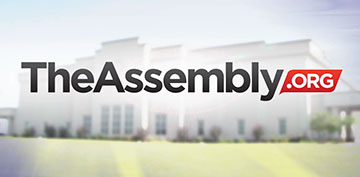
By Mark Brooks
A capital campaign expert offers his best insights about timing, transparency and technology.
Construction-focused capital campaigns are making a comeback. Since the crash of 2008, churches — like many small businesses — have had difficulty acquiring loans from banks. As such, the building of new facilities fell significantly. Most capital campaigns became more about debt reduction than anything else.
——————————————————————————————————————
RELATED RESOURCES:
- How debt-elimination capital campaigns create margin for ministry
- 3 ways technology can drive facilities-focused capital campaigns
- WEB-EXCLUSIVE ARTICLE: 4 causes of a capital campaign derailing
——————————————————————————————————————
In the past year, however, we’ve seen an uptick in construction-focused campaigns. We think this trend will continue into 2014 as the economy continues its plodding recovery.
The best starting point is always the same. I always tell clients to clearly state their need, and to never back up from that.
For instance, let’s say I need a new building for my burgeoning student ministry. Maybe my church really needs it to continue reaching students. The nee d is present. The vision is: What will this facility mean for the future?
d is present. The vision is: What will this facility mean for the future?
Be transparent about the cost. Failing to effectively manage the project’s cost has its own price tag: church leaders’ credibility with the congregation. Never understate the cost to the congregation in an effort to win their support. You might lower the “sticker shock” element, only to have the project run over th e originally stated estimate.
e originally stated estimate.
Get the timing right. When the need for space becomes critical to continued growth, it’s time to pull the trigger on a capital campaign. Nearly every church misses the ideal window, mostly out of fear. Often, the decision is put off until after critical mass is reached. If you’re feeling pressed for space, you might have waited too long.
On the other hand, moving forward with a campaign too early will make raising the needed funds extremely difficult. Most congregants have to “feel the pain” — and know that all other options have been exhausted — before they’ll vote to m ove forward.
ove forward.
Make the most of technology. We’re in the midst of a technological and communications revolution. How people process information today is completely different than just 25 years ago. Now, effective capital campaigns must be digital, in all forms.
We must use social media to communicate the campaign’s message and vision. We must use websites to tell the
campaign’s story and to enable congregants to give to that commitment, online.
Today, if your campaign doesn’t fit in the palm of my hand (a.k.a., in my smartphone), you might not get a commitment from me.
Addit ionally, virtual tours have become so amazing and lifelike that, for many projects, they’re the biggest selling points of the capital campaigns.
ionally, virtual tours have become so amazing and lifelike that, for many projects, they’re the biggest selling points of the capital campaigns.
Mark Brooks is founder and president of The Charis Group and Charis Giving Solutions.


